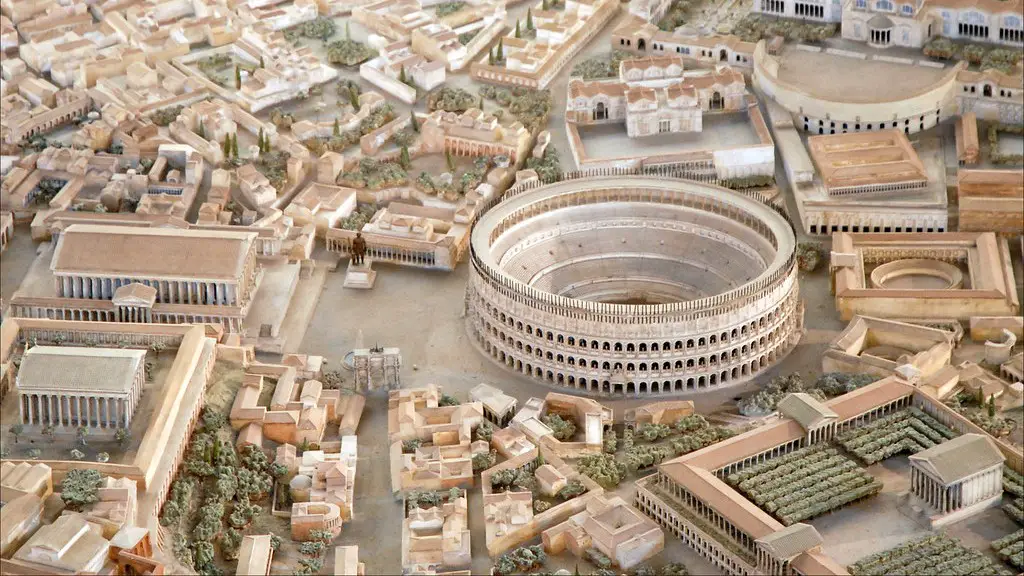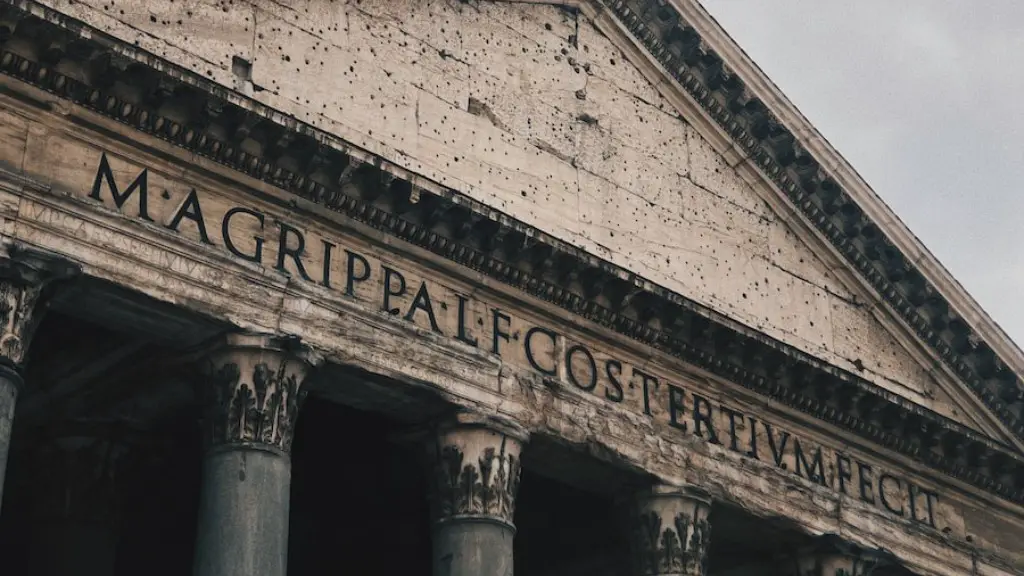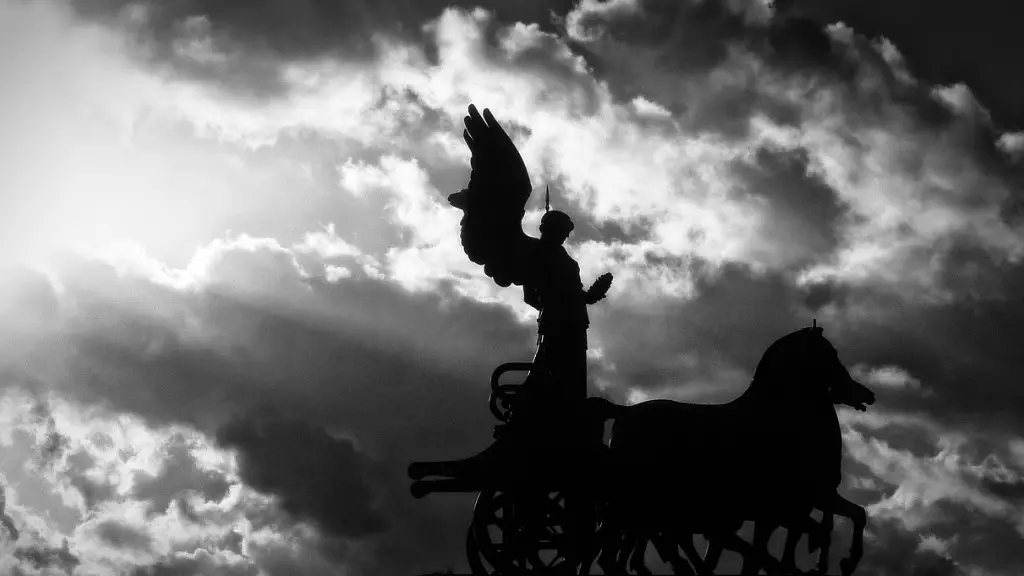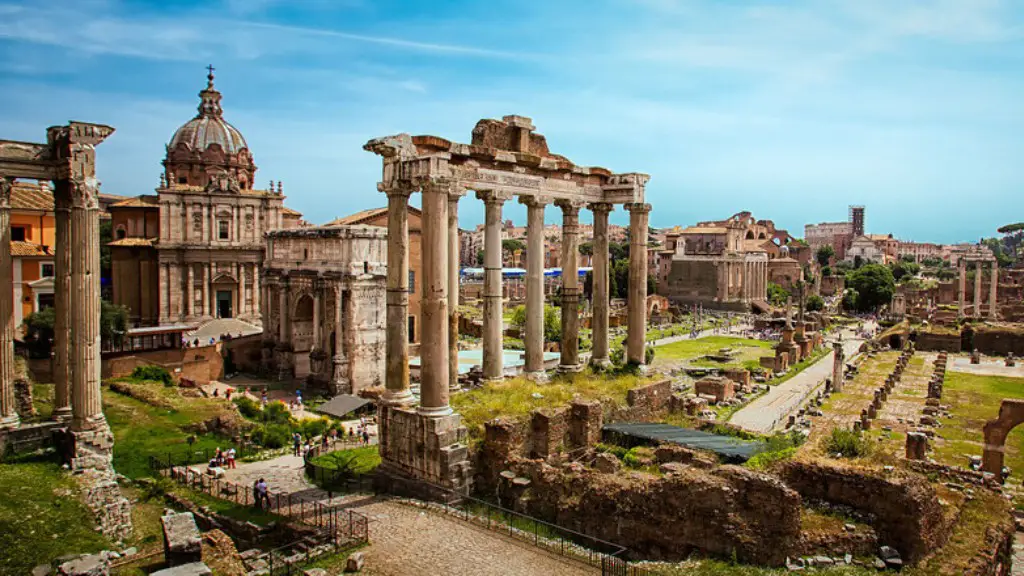Life in ancient Rome was nothing like life in modern day cities. Shopping districts were in the very center of the city and the items on sale were often quite different from what we would expect from the shops of today. Products ranged from food and drink to textiles, jewelry, and weapons – not only for everyday use, but for wealthy Romans too. Although the types of goods available in ancient Roman shops would not be as familiar to us as those in a modern-day shop, there were still certain similarities.
One of the primary items sold in ancient Roman shops was food. Grocers provided fresh produce such as vegetables, fruits, nuts, fish, shellfish, and meats to the citizenry. Furthermore, they sometimes sold delicacies that were typically more widely available to the wealthy upper classes. Additionally, small food shops could be found in the areas of the city that were frequented by merchants and other travelers, offering staples such as olives, cheese, and salted fish. In the wealthier areas of the city, inns and taverns were the preferred places for upper-class Romans to go for a meal.
Textiles were also popular items in ancient Roman shops. Woolen garments were the standard garments for men, while tunics and stolas were the most popular among women. Other materials, such as linen and silk, were also available in some shops, although they were typically more expensive than the more commonplace wool. Some shops also had supplies of ornamented fabrics, often imported from abroad, that would be used to make clothing for special occasions.
Jewelry was also a common item in ancient Roman shops. Gold and silver jewelry was highly sought after by the upper classes, although there were also bronze and glass jewelry items available in the marketplaces. Rings, bracelets, and necklaces were some of the most popular pieces. Precious stones such as pearls, rubies, and emeralds were also highly sought after by wealthier Romans.
Although weapons were not as commonplace in the marketplace, they were still a popular item in some shops. Swords, spears, and bows and arrows were just some of the items sold by the armorers of Rome. Shields and armor were also on sale in the wealthier areas of the city. This equipment was usually only available to the military and the upper class, so the armorers were particular about who they sold the items to.
Finally, pottery was a common item in the ancient Roman shops. Potters crafted cups, jugs, and dishes, some of which were decorated with intricate designs. Others were made to be used in religious ceremony. Certain styles of pottery would become popular among the wealthier citizens, while simpler designs were more accessible to the lower classes.
Household Items
In addition to food, drink, and clothing, many ancient Roman shops sold items to be used in the home. Clay lamps and oil lamps were popular, as were kitchen tools such as pots and pans. Items such as combs, mirrors, and brooms were also available to the public. Some shops may even have sold items for the wealthy, such as furniture and items for entertainments and parties.
On the whole, household items were quite affordable and accessible to the majority of the populace. This meant that, in some cases, the poorer classes were able to purchase items that were similar to those of the wealthier citizens.
However, the wealthier classes were able to access items that were of higher quality and, often, much more luxurious. Not only did these items cost a great deal of money, but they also provided a large social status boost. Having the right item could show a person’s fortunes and put them in a higher class than those without it.
Tools and Equipment
Tools and equipment were also commonly sold in ancient Roman shops. Items such as hammers, saws, and axes were used in construction and farming, while other items such as hooks, scythes, and ploughs were used in agricultural work. These tools and equipment allowed the Romans to build homes, create roads, and grow and harvest food.
In some cases, the wealthier Romans may have had access to items that were of a higher quality than those sold by the shopkeepers. These items could be used for various tasks, from hunting and leisure activities to warfare and defense. The wealthy classes could also hire specialized workers to use these high-end tools and equipment.
Finally, some Roman shops would have items for practical use. This could range from items for repairing clothes and furniture to items for mending broken items. These items would usually be sold alongside other items, such as pottery and other artisan goods.
Medicines and Herbal Remedies
Ancient Roman shops also sold medicines and other remedies. Herbal remedies were popular, especially in the poorer areas of Rome. These remedies were often used to treat ailments such as headaches, stomach aches, and asthma. Some of the ingredients used in these remedies included honey, vinegar, and wine.
In addition to herbal remedies, some shops may have sold more powerful medicines. These medicines were usually more expensive and harder to obtain and, as such, they were typically used only in special circumstances. It is likely that many of these medicines were imported from abroad, as it was often cheaper to do so.
In wealthier areas, physicians and surgeons were available for those seeking medical advice. These health professionals would be employed by the wealthy classes to diagnose illnesses and treat them with their specialized knowledge. However, access to these health professionals was limited, as they had to be brought in from afar.
Religious Artifacts and Statues
Religious artifacts and statues were also popular items in ancient Roman shops. Statues of the gods and goddesses of the Roman pantheon could be found in many places, from main streets to marketplaces. These statues were often made from bronze, silver, and marble, and would be decorated with intricate details.
Religious items were also sold in certain shops. Items for use in religious ceremonies, such as incense, candles, and vessels for carrying offerings, were available. In addition, votive offerings and small statues for home altars were also for sale.
Religious items were used to pay homage to the gods and goddesses of the Roman pantheon. It was believed that by displaying these items and making offerings, good fortune and health would be granted. As such, these items were very popular in Rome.
Recreational Goods
Finally, some shops may have sold items specifically for recreation. Board games, such as the game of merels, were popular amongst the citizenry, as were puzzles and playing cards. As with religious items, these items were often made from metal or stone.
In addition, some shops may have sold items specifically for sporting activities. Balls and hoops were popular, as were items such as racing chariots. Venues for games such as gladiator fights and chariot races could also be rented by the wealthy, who were eager to show off their wealth and status.
Overall, the items available in ancient Roman shops ranged from food and drink to weapons and religious artifacts. Although the goods would not be familiar to us today, there were still certain similarities. From household items to recreational goods, it is clear that the shops of ancient Rome served many purposes.





